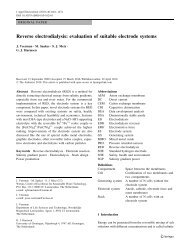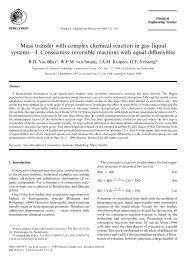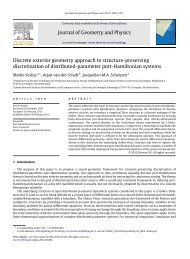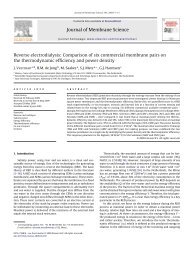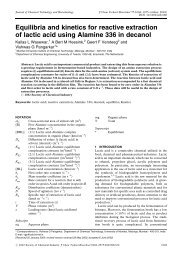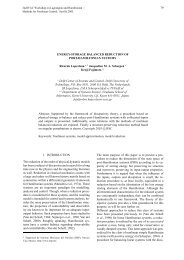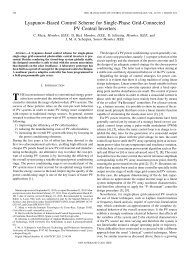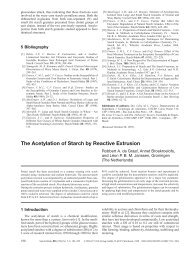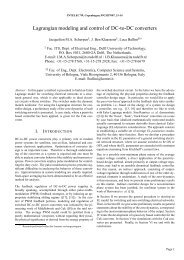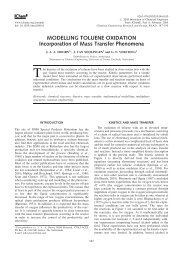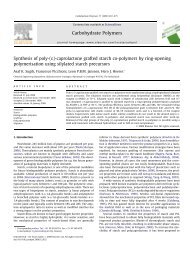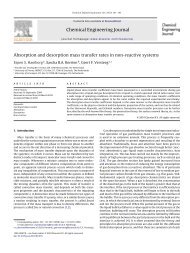FUZZY CLUSTERING, GENETIC ALGORITHMS AND NEURO ... - ITM
FUZZY CLUSTERING, GENETIC ALGORITHMS AND NEURO ... - ITM
FUZZY CLUSTERING, GENETIC ALGORITHMS AND NEURO ... - ITM
Create successful ePaper yourself
Turn your PDF publications into a flip-book with our unique Google optimized e-Paper software.
612 P.F. VAN LITH et al.<br />
the degree of fire of rule i for data vector k, i,k . This gives:<br />
Downloaded by [University of Groningen] at 04:43 19 September 2012<br />
2<br />
ð i,1 Þ 1=2 x 1,1 . . . ð i,1 Þ 1=2 x 1,n 1 ð i,1 Þ 1=2 3<br />
ð i,2 Þ 1=2 x 2,1 . . . ð i,2 Þ 1=2 x 2,n 1 ð i,2 Þ 1=2<br />
~P i ¼<br />
. . . . . . 6<br />
7<br />
4<br />
5 ,<br />
ð i,M Þ 1=2 x M,1 . . . ð i,M Þ 1=2 x M,n 1 ð i,M Þ 1=2<br />
2<br />
ð i,1 Þ 1=2 3<br />
x 1,n<br />
ð i,2 Þ 1=2 x 2,n<br />
~y ¼<br />
6 . 7<br />
4<br />
5<br />
ð i,M Þ 1=2 x M,n<br />
ð16Þ<br />
The solution of the least squares problem of y ¼ Ph i þ ", is given by:<br />
h i ¼ ½ ~P T i<br />
~P i Š<br />
1 ~P T i<br />
~y i ð17Þ<br />
This procedure is repeated for each rule in the model.<br />
With TSK models, as with linguistic fuzzy models, it is possible to<br />
code only the membership function parameters or both the parameters<br />
and the rule structure. However, rule structure optimization may not<br />
always be necessary. For fully connected rule bases, the optimization<br />
structure proposed here does not need rule base optimization. Since<br />
every possible combination of antecedent membership functions is<br />
present, and since the calculation of the consequence parameters is<br />
based on the premise part of the rule structure, calculation of the consequence<br />
parameters will yield the same results for the situation with and<br />
without rule base optimization. The only difference will be that the<br />
rules will be in a different order. For cluster-like connected rule<br />
bases, every antecedent membership function occurs only once. This<br />
way, the rule base described independent ‘‘clusters’’ in the input<br />
space. Since these clusters can be moved around freely by the GA,<br />
rule structure optimization by the GA is not necessary.<br />
The membership functions used in the antecedent part are double<br />
sigmoids, the same as used with clustering. The optimization procedure<br />
can be refined (constrained) by imposing demands on the level of overlap<br />
of the antecedent membership functions and their location, for



